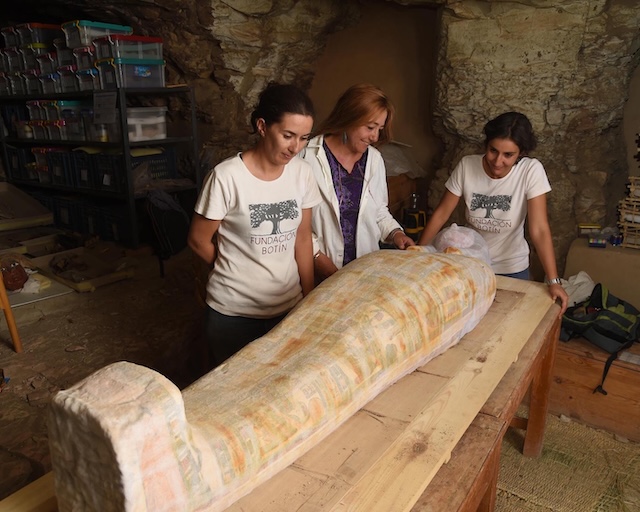The discovery of ancient artifacts offers a glimpse into the past, and few finds are as exciting as the recent unearthing of a 2,800-year-old sarcophagus in Luxor, Egypt. The exquisitely decorated sarcophagus, found near the temple of Thutmose III, contained the remains of a high-ranking official named Amenrenef. This remarkable discovery sheds light on the burial practices and social hierarchy of Egypt during the Third Intermediate Period (1070–712 BCE). Archaeologists are working diligently to uncover the secrets contained within this artifact and the fascinating life of its owner.
The Spanish Thutmosis III Temple Project
The excavation that led to this extraordinary discovery was part of the ongoing Spanish Thutmosis III Temple Project, which has been investigating the pharaonic temple complex of Thutmose III since 2008. The project is focused on uncovering the history of the 18th Dynasty pharaoh Thutmose III, who ruled Egypt from 1479 to 1425 BCE. Situated on the west bank of the Nile in Luxor, this temple was part of an elaborate funerary complex. Although the sarcophagus found in the excavation does not directly relate to the reign of Thutmose III, it provides crucial information about the later dynasties that followed the pharaoh’s reign.
The Third Intermediate Period, in which the sarcophagus likely dates, was a time of great transition and instability in Egypt. After the fall of the New Kingdom, the country was divided and ruled by a series of weak dynasties, which led to the decentralization of power. This period is known for its mix of cultural influences, religious shifts, and economic challenges. The discovery of Amenrenef’s sarcophagus allows historians to better understand the intricacies of this tumultuous era.
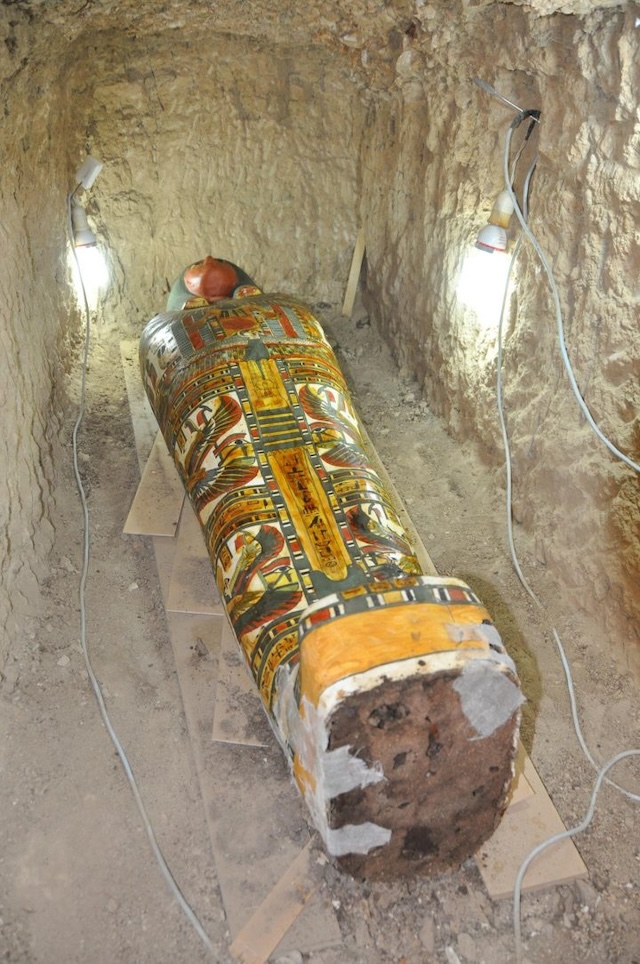
A Royal Court Advisor’s Sarcophagus
Amenrenef, the individual whose remains were found inside the sarcophagus, served as a royal court advisor during his lifetime. His prominent position in the royal court is indicated by the elaborate decoration and hieroglyphic inscriptions on the sarcophagus. Sarcophagi from this period were not just burial containers; they were meant to protect the deceased in the afterlife and communicate their social status and religious devotion.
Despite its age, the sarcophagus retains its bright pigments, offering detailed depictions of the gods Isis and Nephtys, along with the four sons of Horus. These gods played important roles in Egyptian funerary beliefs, particularly in safeguarding the deceased as they journeyed to the afterlife. Isis and Nephtys were known as protective goddesses, while the sons of Horus were associated with the preservation of vital organs. The hieroglyphs also reveal that Amenrenef likely held a significant role in religious and political affairs, further evidenced by his close proximity to the royal court.

Uncovering Clues from Hieroglyphs
Hieroglyphs, the pictorial script of ancient Egypt, serve as a critical tool in understanding ancient civilizations. The inscriptions on Amenrenef’s sarcophagus provide key insights into his life, his role in the court, and the religious practices of the time. Although termites had caused some damage to the wooden container, much of the sarcophagus’s surface remained intact, allowing archaeologists to decipher the symbols.
In addition to the depiction of gods, the hieroglyphs may hold additional information about Amenrenef’s duties, achievements, and family lineage. Given his role as a court advisor, it is likely that he had considerable influence over both political and religious matters, possibly serving the pharaoh in an administrative or advisory capacity.
Restoring the Sarcophagus
After its discovery, the sarcophagus was carefully removed from the burial site and transferred to a lab for restoration and preservation. This delicate process is necessary to ensure that the fragile wood and pigments remain intact for future study. Additionally, restoration efforts will focus on repairing the termite damage that occurred over the millennia.
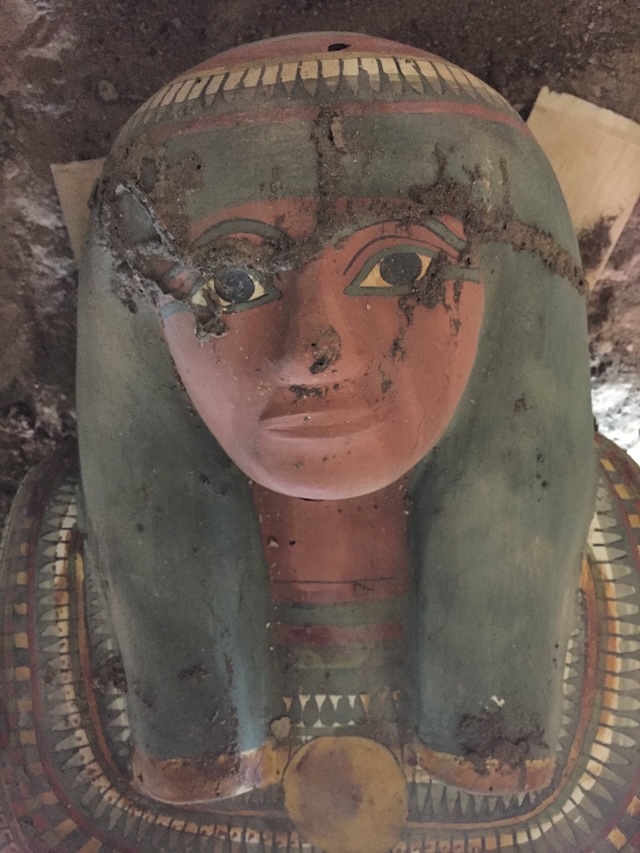
Restorers and archaeologists will also use modern technology to analyze the contents of the sarcophagus. X-rays and other imaging techniques will allow the team to assess the condition of Amenrenef’s remains without disturbing them. These tests will provide valuable information about his health, age, and cause of death, offering further insights into life during the Third Intermediate Period.
The Third Intermediate Period and Its Significance
The Third Intermediate Period is a particularly fascinating time in Egyptian history due to its political fragmentation and cultural diversity. The period was marked by a division of power between the rulers of Lower and Upper Egypt, with the pharaohs of the 21st Dynasty based in Tanis in the north and the High Priests of Amun controlling Thebes in the south. This division of authority led to a complex power structure, with Amenrenef likely serving as a high-ranking advisor within one of these factions.
Religiously, the Third Intermediate Period saw the continuation of traditional Egyptian beliefs, although there was increasing regional variation. The inclusion of gods like Isis and Nephtys on Amenrenef’s sarcophagus indicates that these deities still held significant importance in funerary rituals, even as political and economic changes were taking place.
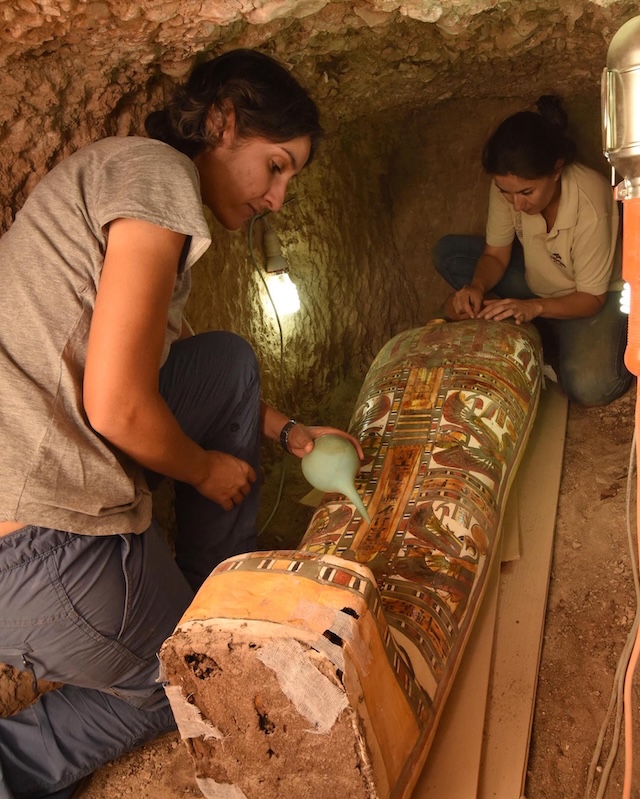
Archaeological Insights and Future Discoveries
The discovery of Amenrenef’s sarcophagus is part of a larger trend in archaeology where modern technology and careful excavation techniques are providing unprecedented access to ancient history. Through the use of advanced imaging tools, restorers and archaeologists can study artifacts in ways that were not possible even a few decades ago.
This find also serves as a reminder of the rich history still buried beneath the sands of Egypt. Luxor, in particular, is one of the most archaeologically significant sites in the world, with many tombs, temples, and artifacts waiting to be uncovered. Each discovery adds another piece to the puzzle of Egypt’s past, helping us better understand the lives, beliefs, and achievements of ancient civilizations.
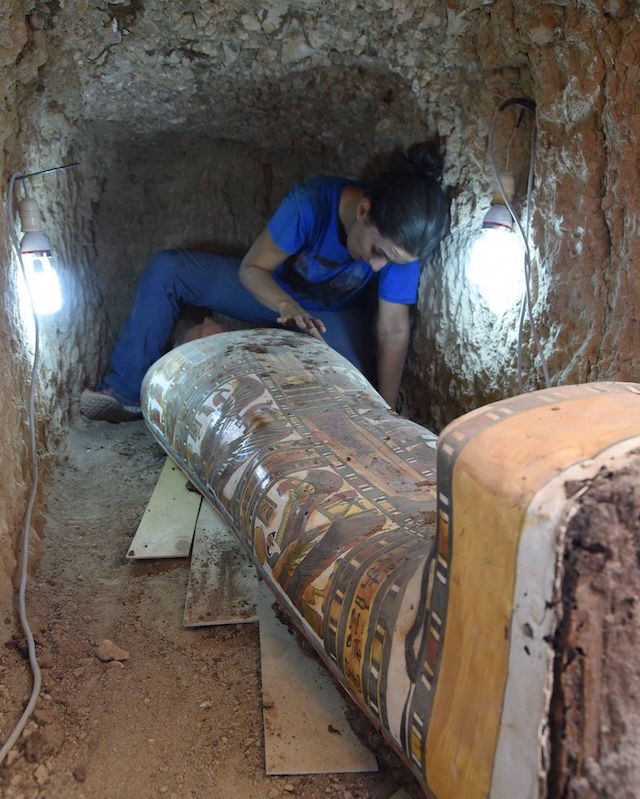
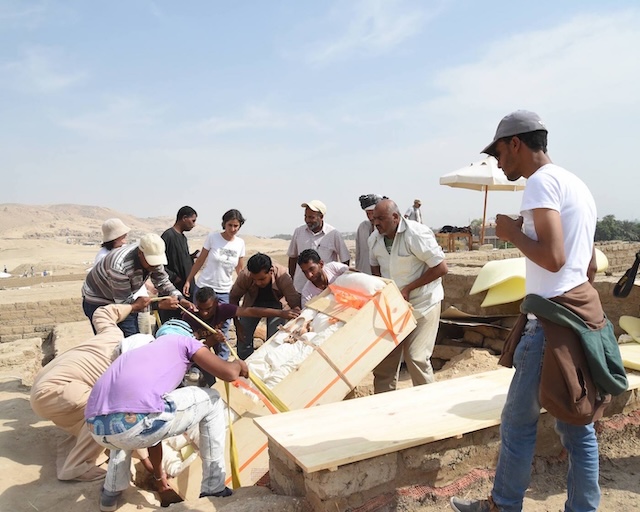
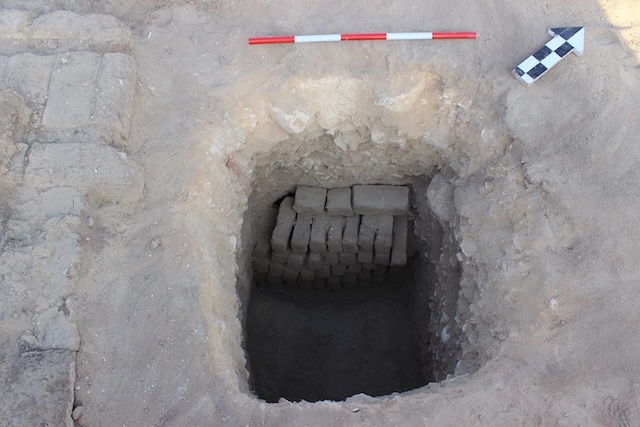
Conclusion
The discovery of the 2,800-year-old sarcophagus belonging to Amenrenef offers a fascinating glimpse into the life of a royal court advisor during Egypt’s Third Intermediate Period. The intricate hieroglyphs, vivid depictions of gods, and the preserved remains of Amenrenef provide archaeologists with a wealth of information about this time of political and cultural transition in Egypt. As restoration efforts continue, further discoveries may emerge, shedding even more light on the legacy of this high-ranking official and the world he inhabited.
This remarkable find not only deepens our understanding of Egyptian history but also serves as a testament to the skill and dedication of the archaeologists working to preserve the past. The story of Amenrenef is one of many waiting to be told as archaeologists continue to unearth the secrets of ancient Egypt.
